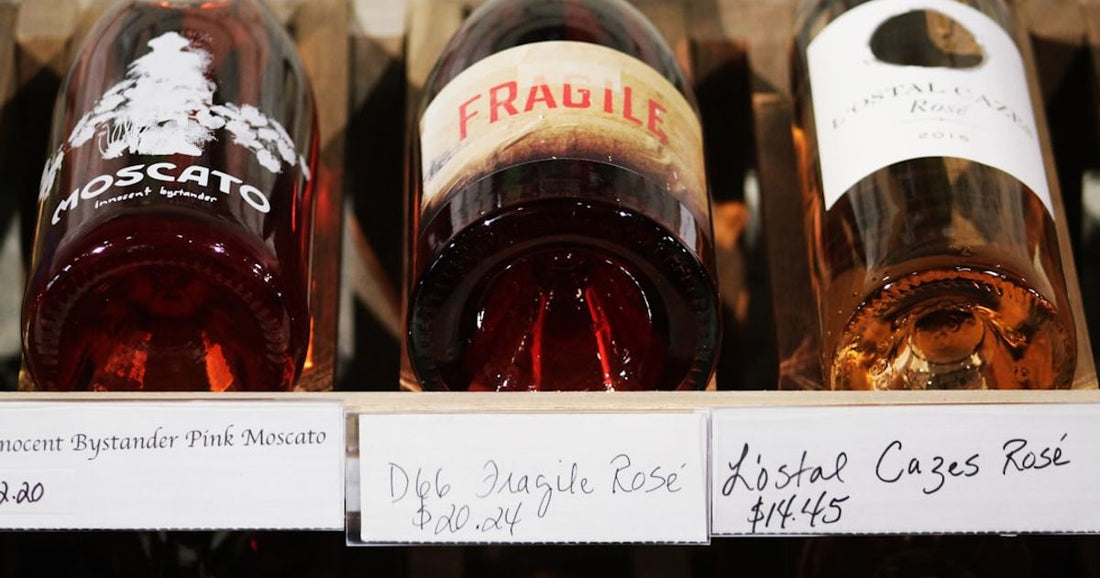
Global Wine Market: Current Trends and Analysis
Share
The global wine market is a complex and ever-evolving landscape, characterized by shifting consumer preferences, technological advancements, and the constant challenge of climate change. As both enthusiasts and professionals navigate this dynamic industry, understanding the current trends and economic challenges becomes crucial. This article delves into the heart of the global wine industry, exploring the latest market trends, the impact of economic factors, and the future outlook. From emerging wine regions to the influence of digital transformation, we'll cover the key aspects that are shaping the wine world today.
Key Takeaways
- The global wine market is experiencing significant shifts due to changing consumer preferences, with a growing demand for organic and biodynamic wines.
- Economic challenges such as tariffs, climate change, and the COVID-19 pandemic have had a profound impact on wine production and distribution.
- Technological advancements are revolutionizing the wine industry, from precision viticulture to e-commerce platforms.
- Emerging wine regions are gaining recognition, challenging the dominance of traditional wine-producing countries.
- Sustainability and environmental concerns are driving innovation in wine production and packaging.
Market Trends: A Deep Dive
The wine industry is witnessing several key trends that are shaping its future. Consumer preferences are evolving, with a noticeable shift towards organic, biodynamic, and natural wines. These wines, produced with minimal intervention and a focus on sustainability, are gaining popularity among health-conscious consumers and those concerned about environmental impact.
The Rise of E-commerce
The digital transformation of the wine industry has accelerated, particularly in the wake of the COVID-19 pandemic. Online wine sales have surged, with consumers increasingly turning to e-commerce platforms for convenience and a wider selection. This shift has prompted wineries and retailers to enhance their online presence and invest in digital marketing strategies.
Premiumization Trend
Another significant trend is the premiumization of wine, where consumers are willing to pay more for higher quality products. This trend is driven by a growing interest in wine culture and education, leading consumers to explore fine wines and limited editions. As a result, wineries are focusing on producing high-quality wines that can command higher prices.
Economic Challenges and Their Impact
The wine industry is not immune to economic challenges, which can significantly affect production, distribution, and consumption patterns. From global trade tensions to the effects of climate change, these challenges require strategic responses from producers and distributors alike.
Trade Tensions and Tariffs
Trade tensions and tariffs have created uncertainty in the global wine market. For instance, tariffs imposed on European wines by certain countries have disrupted traditional trade routes, forcing wineries to seek new markets or absorb additional costs. These trade barriers can lead to price increases, affecting consumer access to a diverse range of wines.
Climate Change and Sustainability
Climate change poses a significant threat to wine production, with rising temperatures and unpredictable weather patterns impacting vineyard yields and wine quality. In response, the industry is exploring sustainable viticulture practices and innovative technologies to mitigate these effects. Sustainability is becoming a key consideration for consumers, influencing their purchasing decisions.
Technological Advancements in the Wine Industry
Technology is playing a pivotal role in transforming the wine industry, from vineyard management to consumer engagement. Precision viticulture, using drones and sensors, allows for more efficient monitoring of vine health and soil conditions, leading to improved wine quality.
Digital Marketing and Consumer Engagement
Digital marketing strategies, including social media and content marketing, are crucial for engaging today's consumers. Wineries are leveraging these platforms to tell their stories, showcase their products, and build brand loyalty. Virtual wine tastings and online events have also become popular, offering new ways to connect with consumers.
Emerging Wine Regions on the Rise
While traditional wine-producing countries like France, Italy, and Spain continue to dominate, emerging wine regions are gaining recognition for their quality and innovation. Countries such as China, India, and Brazil are investing in viticulture and winemaking, challenging the status quo and introducing unique flavors to the global market.
The Influence of New World Wines
New World wines, from countries like the United States, Australia, and South Africa, are known for their bold flavors and innovative approaches. These regions are not bound by the same traditions and regulations as Old World wine countries, allowing for greater experimentation and diversity in wine styles. For a detailed comparison, check out our article on Old World vs New World Red Wines.
The Future Outlook: Sustainability and Innovation
The future of the global wine market is likely to be shaped by sustainability and innovation. As environmental concerns continue to influence consumer behavior, wineries are adopting eco-friendly practices, from organic farming to sustainable packaging. Innovations in wine production, distribution, and marketing will also play a crucial role in adapting to the changing landscape.
The global wine market is at a crossroads, facing both challenges and opportunities. As it navigates economic uncertainties, climate change, and shifting consumer preferences, the industry's resilience and adaptability will be tested. However, with a focus on sustainability, technological innovation, and exploring new markets, the wine industry is poised for continued growth and evolution. For enthusiasts and professionals alike, staying informed and adaptable will be key to thriving in this dynamic market.



